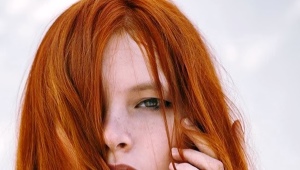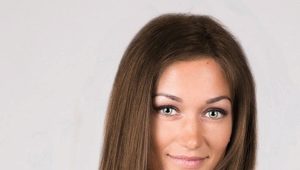Does henna cover gray hair?

Gray hair can and should even be dyed with henna. This remedy is good for hair and convenient to use at home, especially for those who prefer only natural hair products.
Peculiarities
In famous Indian films, all oriental beauties have gorgeous hair. No matter how old the heroine is, at least 50, not a single gray strand is visible in her hair, and the length of the curls is in no way comparable to her age. All this thanks to the regular use of natural hair products. Unlike conventional dye, henna does not damage the hair cuticle, so the curls become better with each dye.

But there are some features of staining gray hair with henna. First you need to understand that gray curls differ in color due to their structure. In ordinary hair, it has a filling that determines the color, the so-called pigment. Gray-haired curls do not have such filling, they are hollow. Therefore, such hair is quite coarse, hard and dry. After staining with henna, gray hair becomes strong at the roots, shiny and the color is more saturated.

Advantages and disadvantages
But not everything is as rosy with natural hair dyes as you might imagine at first glance. Henna has its advantages and disadvantages to use.
Pros:
- Does not contain chemicals that can adversely affect gray hair.
- There are no age restrictions for use.
- Protects from the harmful effects of the sun's rays.
- Protects curls from dandruff.
- Improves the structure of the strands: they become smooth and silky.
- After use, the hair becomes voluminous and well-groomed.
- Regulates the work of the sebaceous glands, so that the curls remain fresh for a long time.
- Improves blood circulation, making hair grow much faster.

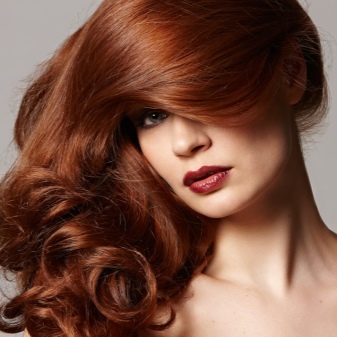
Minuses:
- It may not paint over gray hair, but only serve as a tinting agent.
- Do not use on already dyed hair, only on gray hair. There is a chance to get green hair color even for a brunette.
- It can dry out the strands, so it is better to use a greasy balm before use.
- Do not use for perm, as the powder can straighten curls.
- Frequent use of the product leads to hair stiffness.
- You can not paint curls with ordinary paint after staining with henna.
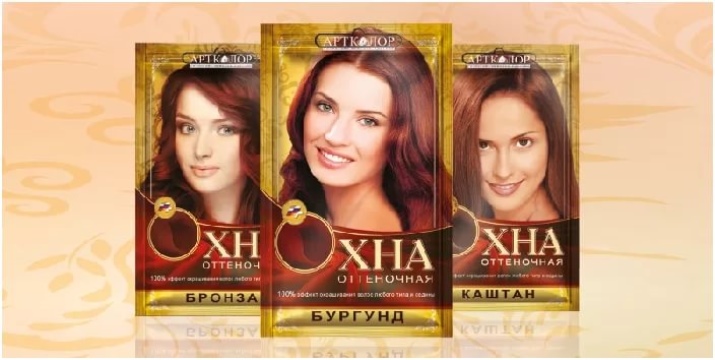
Which is better?
There are several types of henna, each of which is designed for a specific shade of hair.
- colorless henna - These are the crushed leaves of the Indian herb lavsan. In such leaves there is no coloring pigment. Colorless henna can be added to hair masks, it makes curls shiny and promotes their growth.
- colored henna - the most popular and is much cheaper than colorless. With the help of such a tool, you can get different shades of hair, and it is used for coloring strands. The tool also has healing properties, with which you can restore damaged hair.
- Brightening. Such henna is able to lighten curls by a tone and a half. Used only in combination with hair oil.
The choice of means depends on the purpose of use. For dyeing gray hair, you should choose colored henna.


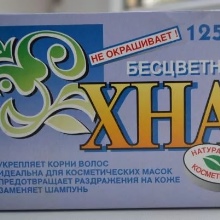
How to paint?
Coloring gray hair with henna has several subtleties, the knowledge of which will help you easily dye your hair in the right shade.
- Before dyeing, you need to wash your hair, be sure to apply balm and conditioner to moisturize them. It is better to dry your hair with any fabric product, both a cotton cloth and linen will do.
- Henna is best diluted with warm water. It must be remembered that the dye should not be diluted with boiling water or hot water, since boiling water leads to the loss of the pigment itself.
- Coloring should start from the back of the head, because the back of the head has very coarse and thick hair. After moving on to the temporal regions, and only then to the parietal region, at the very end - small hairs near the forehead (they are the thinnest, and the time for their coloring is minimal).
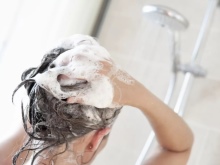


How much to keep?
The time it takes to stain with henna is exclusively individual. On average, it will take from half an hour to three or four hours of "exposure". Coloring depends on the structure of the strands. It is important to remember that henna shows its “very juice” of color about the next day after staining. If the result is not immediately pronounced, and the curls have a slightly different shade, do not panic. Everything will be clear the next day.
Be sure to experiment with coloring on several strands. So it will become clear in what proportion and how long you need to paint specific curls. The result of henna staining is more obvious and effective if the strands have not been chemically attacked.
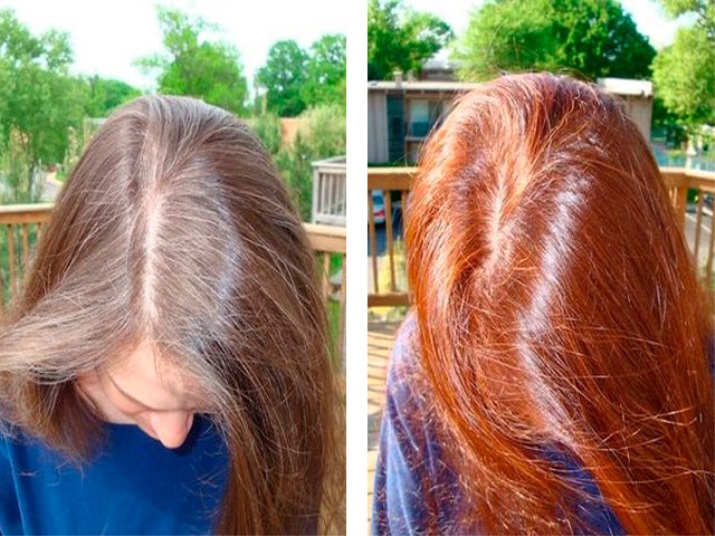
With basma
Henna is a plant that has a coloring pigment of honey, red, golden hues.If staining is done only with henna, then the final result will be just such a shade. To get a darker color (chestnut, light brown or chocolate), basma must be added to henna.
Basma is another natural coloring agent and also paints over gray hair well. It has a dark blue and greenish color. Basma as an independent dye (without adding henna) is better not to use, because the result will be a blue-green shade of the strands. These two dyes are used exclusively in tandem.
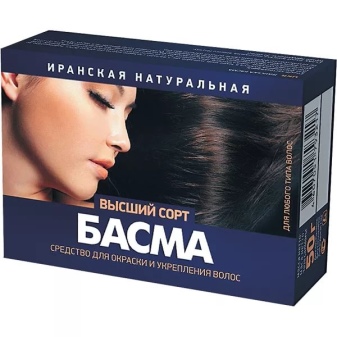

To obtain a reddish-blond color of curls, it is enough to mix the paint in the following proportions: one teaspoon of henna to two teaspoons of basma. To get a darker shade of hair, you need to mix one teaspoon of henna and three teaspoons of basma. If necessary, increase the dose. It is better to mix these two colorants in a powdered state, and then add warm water.
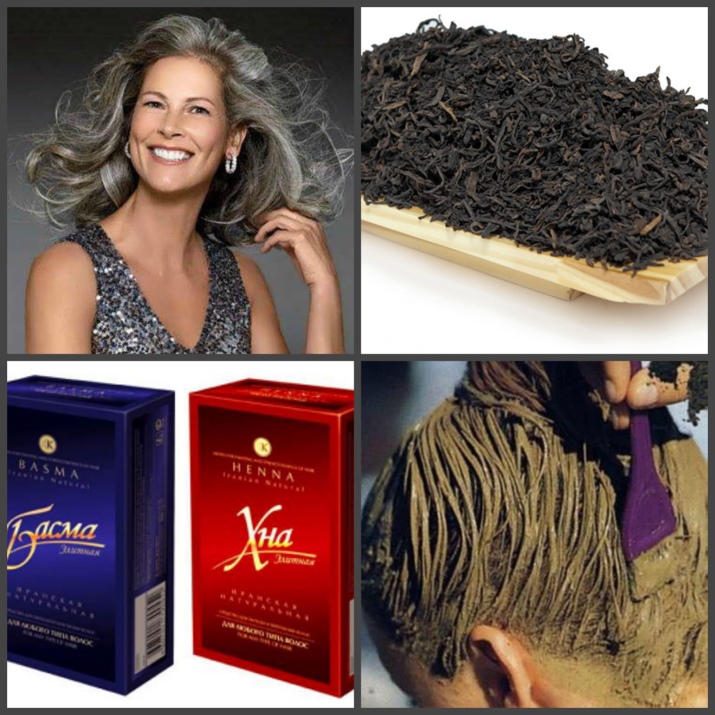
Recipes
There are many recipes for obtaining different shades of hair.
- For a sunny red hue dilute two packages of henna with warm water, add any acidic medium to the mixture (for example, lemon juice, kefir, vinegar). So henna will give more intense pigment to the hair. Then add one or two tablespoons of cosmetic oil (for example, burdock, olive, vegetable, sea buckthorn, coconut or almond). This will further moisturize the hair. Henna is best applied immediately after connecting all the components. Hair does not need to be wrapped in a bag or towel. The longer the paint will be in the air, the better it will show its coloring properties.
- To obtain light brown and brown. Mix one bag of henna with two or three (for a darker color) bag of basma.They must be mixed dry. To this mixture, add brewed tea or coffee and one or two tablespoons of oil (for example, burdock, apricot kernels, coconut, almond or olive oil). Mix everything well until it becomes a paste. Apply to curls.
- Separate coloring. The two previous recipes can be applied separately. First apply henna, as written in the first recipe. Hold for half an hour to an hour, rinse and dry with a towel. Then apply basma, as written in the second recipe. Hold for up to four hours, then rinse.
- Brew strong tea, add a teaspoon of turmeric and basma. Keep it all for about an hour and rinse with running water. Instead of strong tea, you can add coffee, and instead of turmeric - oak bark. Tea will remove the rusty color that can result from dyeing, while not getting too dark hair color.
Video about hair coloring with henna and coffee, see below.
Henna can be washed off only with running water without the use of shampoo or soap. Henna and basma are afraid of an alkaline environment. It is recommended to resort to washing your hair with shampoo on the third day after dyeing. And if the result turned out to be richer than desired, then just the opposite, you need to thoroughly rinse these sections of the strands with alkali. It is better to apply any mixture with a special brush, as when dyeing hair with ordinary paint. It is also recommended to use special gloves to protect your hands.


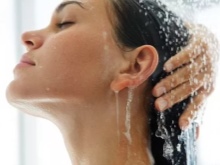
Reviews
According to reviews, most users positively evaluate the effect of henna on curls. Someone has been using henna for decades and forgot about hair loss. Someone uses the powder all his life, because the curls do not accept ordinary hair dye, and in case of an allergy to chemical dye, henna is also used.For most users, after using henna, the hair became shiny, smooth, silky and stopped falling out.

It is difficult for some to choose the right shade of henna, so after one use they stop dyeing their hair in this way. Some of the reviews say that henna made the hair stiffer than it was before dyeing. Someone is not satisfied with the prospect of dyeing their hair at home every time, and in beauty salons such a procedure is rare or much more expensive than regular hair dye.
Opinions about staining gray hair with powder differ. Some get it, others don't. In any case, it must be remembered: it all depends on the structure of the hair, the time of dyeing and the initial condition of the hair. And, of course, any coloring should be approached wisely: prepare all the necessary components and tools in advance, and then carry out the painting procedure.
How to dye your hair with henna and basma, see the next video.























